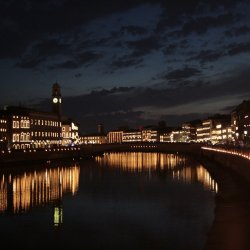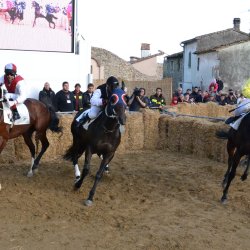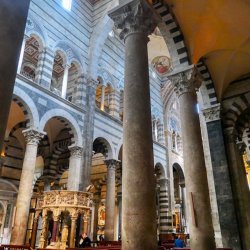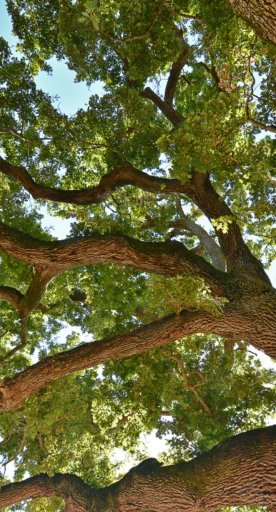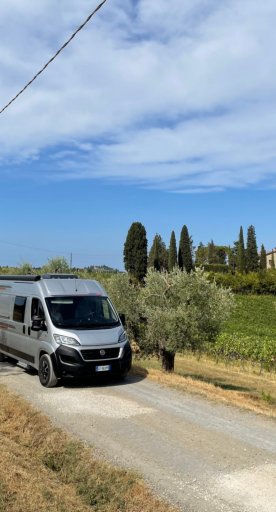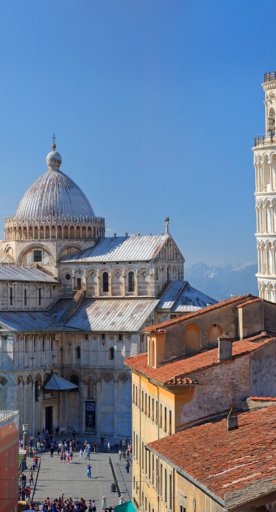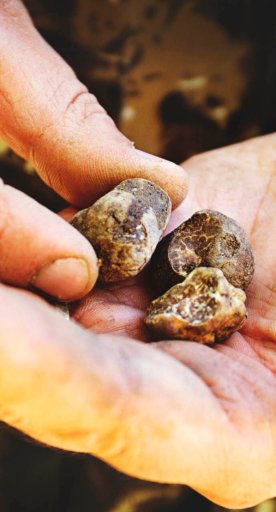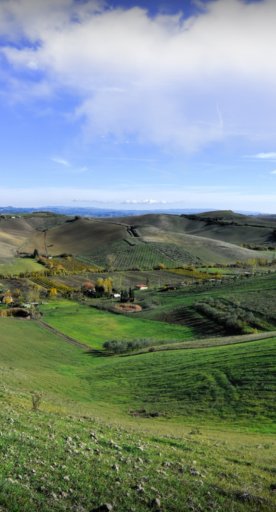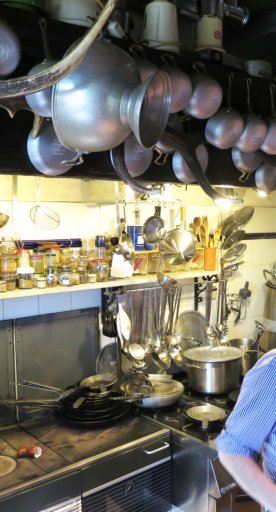

5 things to do in San Giuliano Terme
From the Dante Pass to the thermal springs
San Giuliano Terme is a town in Terre di Pisa, bordering the city of Lucca.
Having been an important centre since Roman times when it was called Acquae Pisanae, it's now a place of entertainment for many famous people who use its thermal waters. The villas of noble families still adorn the various hamlets of the municipality, all under Monti Pisani’s shadows. In this article, we outline 5 things that you absolutely must not miss in San Giuliano Terme!
-
1.Amphitheatre Park
-
2.Dante Pass
-
3.The thermal baths
-
4.Via dei Condotti
-
5.The Four Winds
-
6.Other San Giuliano Terme novelties
Amphitheatre Park
The Amphitheatre Park stands on a hill just above the village of San Giuliano Terme and is a magical, relaxing place away from traffic. The park opens onto a crescent-shaped clearing that makes you feel as though you’re in an ancient grass amphitheatre.
There's a breathtaking view of the province of Pisa from here that extends well beyond the city limits. The Leaning Tower of Pisa and other monuments in piazza dei Miracoli appear clearly and are easily distinguishable. Behind the park, there are some quarries for the extraction of marble, which - during the Middle Ages - had considerable economic importance for the town. The dark grey marble extracted in these quarries was used for some decorative elements of piazza dei Miracoli in Pisa.
Dante Pass

The mountain that rises above San Giuliano Terme has always been the natural border between the provinces of Pisa and Lucca. Before the famous gallery (commonly known as "Il Foro") was built, wayfarers had to cross the Passo di Dante to reach the opposite side of the mountain. The pass is named after the renowned poet Dante because it's mentioned in the thirty-third canto of Inferno:
"... This man appeared to me as lord and master;
he hunted down the wolf and its cubs upon the mountain
that prevents the Pisans from seeing Lucca.”
The trekking route starts from the aforementioned Amphitheatre Park, is suitable for beginners and lasts about 6 km. The more experienced walkers who wish to continue further can take the paths 00 or 15, as marked by the CAI.
The thermal baths

The baths of San Giuliano have been popular since Roman times, as evidenced by records left by Pliny the Elder. The thermal complex became famous all over Europe after some renovation works were carried out at the end of 1700, when the village was known as Bagni di San Giuliano.
Many illustrious figures have passed through here including the English poet Percy B. Shelley and his wife, the writer Mary Shelley, who stayed in a flat right in front of the entrance of the spa on which there's now a plaque. Today, the spa is known as Bagni di Pisa Tuscany and offers a 5-star resort where you can relax and find peace of mind.
Via dei Condotti

The hamlets of Ghezzano and Asciano are around five minutes by car from San Giuliano Terme, connected by the cycle/pedestrian path of Via dei Condotti. The route runs alongside a Medici aqueduct that was in use between the 17th and 20th centuries. The modern pipelines follow the same route as this structure and today they are located underground next to it.
The best place to start the walk is from Ghezzano: as well as being immersed in history, the surrounding nature is also stunning, with the silhouette of the Monti Pisani behind Asciano looming ahead of you.
The first stretch of the Via dei Condotti is unpaved, then it becomes a wider and cemented road.
The Four Winds

To immerse yourself in the natural surroundings of the Monti Pisani you absolutely must go to the Four Winds. This mountain trail with a panoramic viewpoint is located in the hamlet of Molina di Quosa, less than 10 minutes by car from San Giuliano Terme.
You can go up by car along the Via Panoramica Molina di Quosa or, for the more adventurous, you can walk along Via dei Molini for a couple of kilometres before coming out onto the main road (which is fairly busy with cars passing by). The Four Winds is also an area renowned for its chestnuts and porcini mushrooms.
Other San Giuliano Terme novelties
- Sangiuliano is an area known for its excellent production of oil; there are several municipalities along the Oil Road of Monti Pisani which are centered around oil production and offer visits to oil mills.
- The most famous typical delicacy of the area is the Torta co' Bischeri which originated from the hamlet of Pontasserchio. The main ingredients of this cake include chocolate, pine nuts and candied fruit. The "bischeri" are the typical puff pastry folds on the edge of the cake.
- Every spring the Agrifiera, an event that takes place in Pontasserchio, attracts visitors from all over San Giuliano and the provinces of Pisa and Lucca. This village fair was created at the beginning of the 20th century in order to promote the local cattle (the Mucco Pisano). Today it has become an important agricultural and livestock fair.




